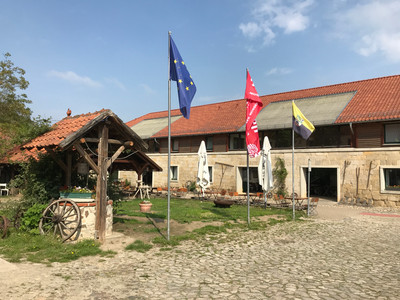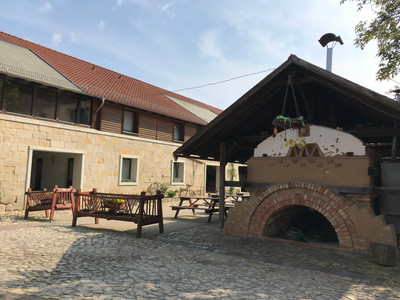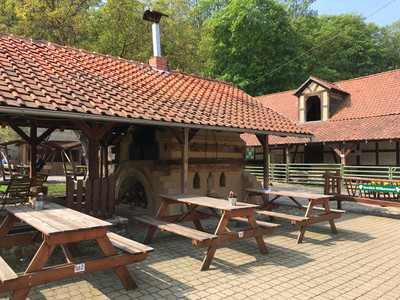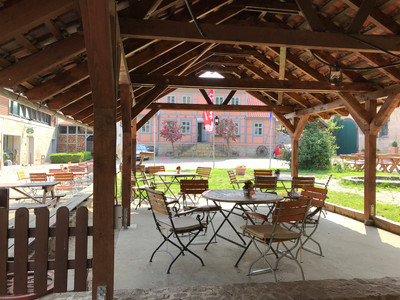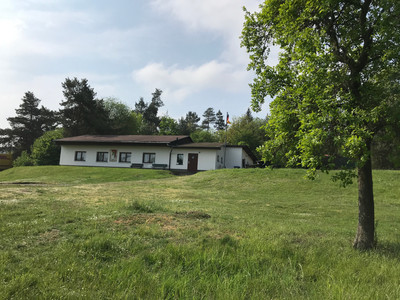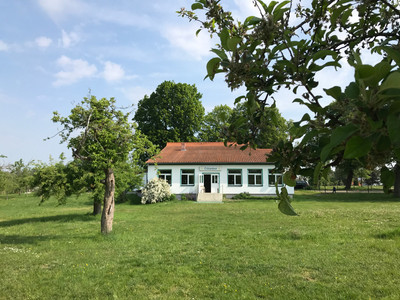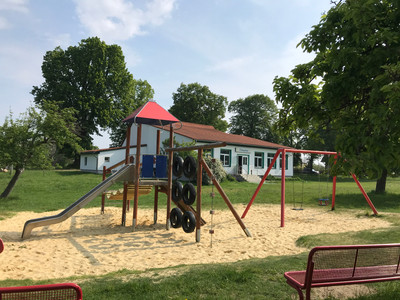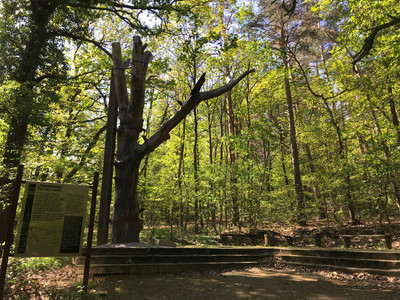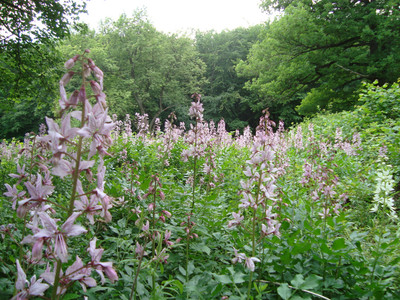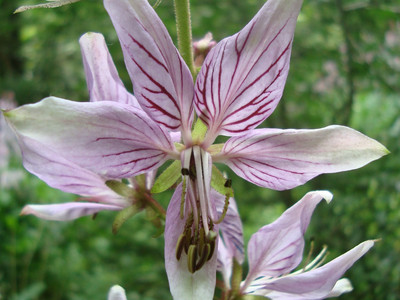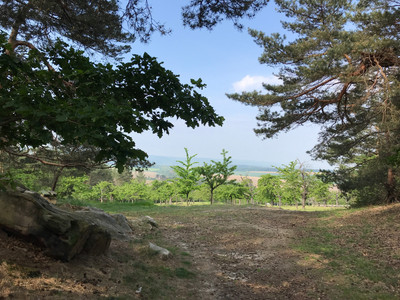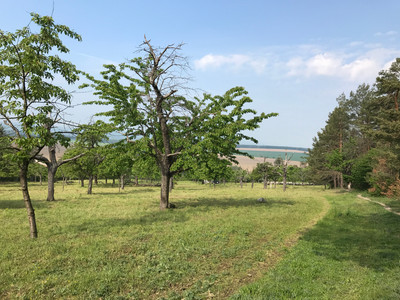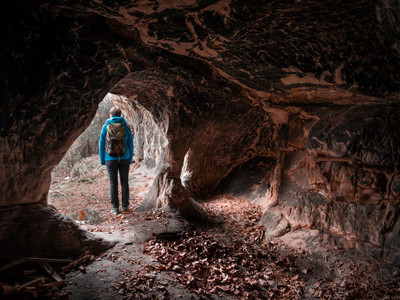There is a lot to see on this route: Schäferhof Schützenplatz Waldhalle Langenstein Zwieberge Memorial Death Pine Tönningstein Diptam Meadow Stone Table Cherry Meadow
What to expect:
- Schäferhof
Old manor from the Thuringian period (5th century). Later used as a Schäferhof. Stones from the Altenburg were probably used for construction. Thoroughly restored after 1990. - Schützenplatz
The shooting house stands in the scattered orchard meadow. The Langenstein shooting club was founded in 1817. Originally, shooting took place from the shooting house window at the concrete base. - Waldhalle
This was the forester's house. In the summer months, hikers could stop here. For the forester, it was an additional source of income. The building had its own well. - Langenstein Zwieberge Memorial
In 1944, the armaments production was to be relocated by the Nazi regime under the Thekenberge. For this, prisoners from the Buchenwald concentration camp were brought. The construction of the underground facility was not completed. Around 6,000 people died due to the inhumane conditions. The memorial was built in their honor. - Death Pine
The pine served as an execution site for SS henchmen. Among others, a Soviet officer was executed here who refused to hang other inmates. - Tönningstein
There was a dispute between two shepherds here. Each claimed the other had crossed the district boundary. After one shepherd died, the other had to erect this stone as atonement. - Diptam Meadow
The Diptam is a warmth-loving plant that reaches its northern distribution limit in our area. The large Diptam meadow is unique. Nowhere else does the plant appear in such large numbers. Diptam emits essential oils. On very hot days, it is said you can ignite it. That is why Diptam is also called the Burning Bush. - Stone Table
The Hoppelberg and the associated hunting belonged to the Langenstein estate owner. The Stone Table served as a meeting point and resting place for the hunting parties. A prominent leaseholder was the poet prince Gleim. - Cherry Meadow
The large orchard was later partially planted with pines. On the northwest side is the Siemens Stone.

